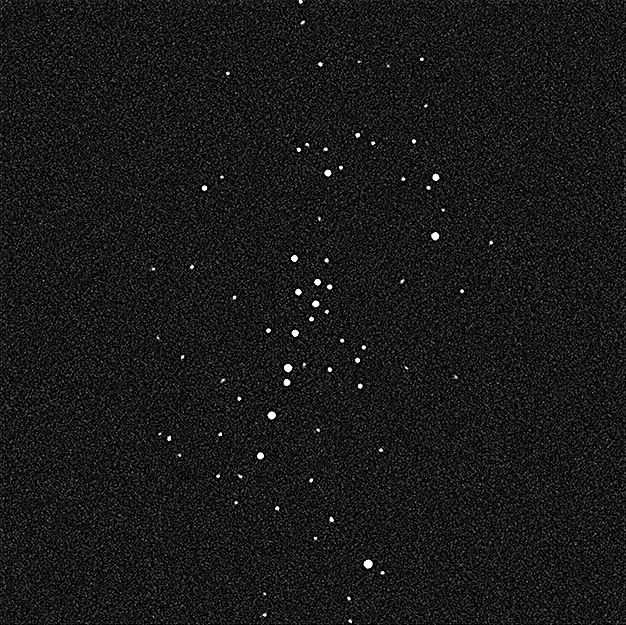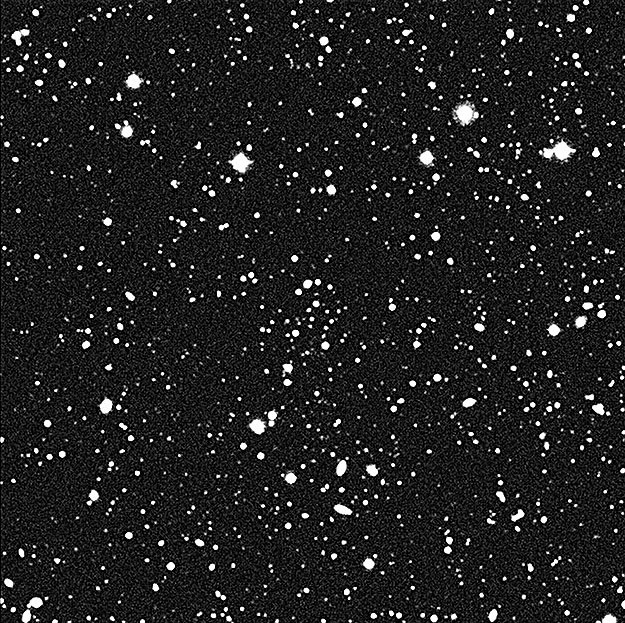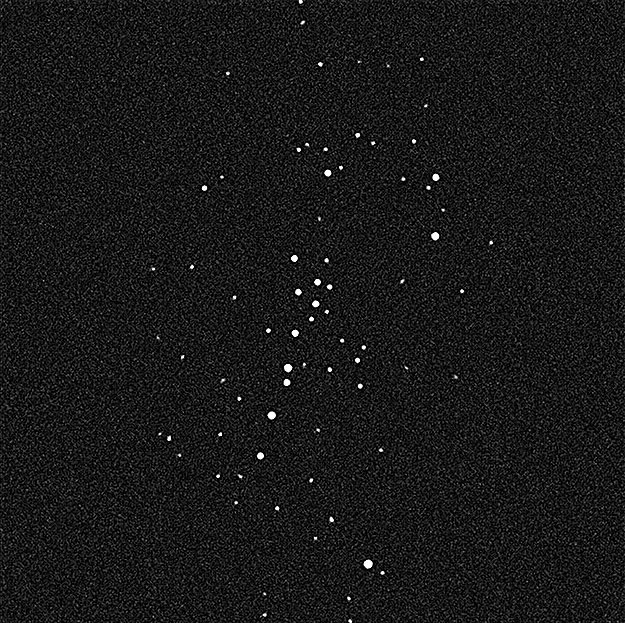
11th April 2024 Astronomers find smallest known galaxy Ursa Major III, a dwarf satellite galaxy of the Milky Way, is the smallest and faintest galaxy ever discovered.
When you hear the word "galaxy", you probably think of vast, spiral swirls of stars and nebulae, measuring thousands or even millions of light-years across – island universes unto themselves. Our own Milky Way galaxy is more than 87,000 light years from end to end, with an estimated 400 billion stars, while our neighbour Andromeda is 152,000 light years in diameter and contains around a trillion stars. Much like stars, however, there is tremendous variation in the size and mass of galaxies. Other members of the Local Group, for example, include the Large and Small Magellanic Clouds, which are 32,000 light years and 19,000 light years in diameter, respectively. More than 60 other dwarf satellite galaxies are known to orbit the Milky Way. These are distinct from open clusters, and globular clusters, which are tightly bound groups of stars within a galaxy, not independent galaxies themselves. Until recently, the smallest known dwarf galaxies tended to have about 1,000 stars, forming regions of 100 light years or so. But an intriguing new discovery has revealed that, in fact, galaxies can be smaller still. Ursa Major III (UMa3), an incredibly faint and small dwarf satellite, is thought to contain just 60 stars in a space measuring 19.6 light years in diameter. This new record holder is located 32,600 light years away. Its position – relative to Earth, the Milky Way, and the Magellanic Clouds – can be seen in the animation below:
A team led by the University of Victoria in Canada and Yale University in Connecticut, United States, used a trio of telescopes – the Keck Observatory and the Canada-France-Hawaii Telescope (CFHT), alongside the Panoramic Survey Telescope and Rapid Response System (Pan-STARRS) – all three in Hawaii. The results of their study appeared recently in The Astrophysical Journal. "This discovery may challenge our understanding of galaxy formation and perhaps even the definition of a 'galaxy,'" said Simon Smith, a graduate student at the University of Victoria and lead author. "UMa3 had escaped detection until now due to its extremely low luminosity." In addition to being the faintest, smallest, and lowest-mass Milky Way dwarf satellite ever discovered, UMa3 is also one of the most dark matter‑dominated systems known. "Excitingly, a tentative spread in velocities among the stars in the system may support the conclusion that UMa3 is a dark matter-dominated galaxy," explained Will Cerny, a graduate student from Yale University and co-author. "A tantalising possibility we hope to scrutinise with more Keck observations." Stars that formed in the early universe did so from clouds predominantly made of hydrogen and helium, with very few heavier elements. With its metal-poor stellar population, UMa3 is likely to be ancient, possibly more than 11 billion years old. This would make it more than twice as old as our Solar System. "The object is so puny that its long-term survival is very surprising. One might have expected the harsh tidal forces from the Milky Way's disk to have ripped the system apart by now, leaving no observable remnant," added Cerny. "The fact that the system appears intact leads to two equally interesting possibilities. Either UMa3 is a tiny galaxy stabilised by large amounts of dark matter, or it's a star cluster we've observed at a very special time before its imminent demise." The team first detected UMa3 using data obtained from the CFHT and Pan-STARRS. They then looked at the stars in finer detail, using the Keck Observatory's Deep Imaging Multi-Object Spectrograph (DEIMOS), which has 64 megapixels of resolution, and confirmed that UMa3 is a gravitationally-bound system.
Click to toggle between hidden and unhidden:
"There are so few stars in UMa3 that one might reasonably question whether it's just a chance grouping of similar stars," explained co-author Marla Geha, Professor of Astronomy and Physics at Yale University. "Keck was critical in showing this is not the case. Our DEIMOS measurements clearly show all the stars are moving through space at very similar velocities and appear to share similar chemistries." "Whether future observations confirm or reject that this system contains a large amount of dark matter, we're very excited by the possibility that this object may be the tip of the iceberg – that it could be the first example of a new class of extremely faint stellar systems that have eluded detection until now," added Cerny.
Comments »
If you enjoyed this article, please consider sharing it:
|
||||||||||









